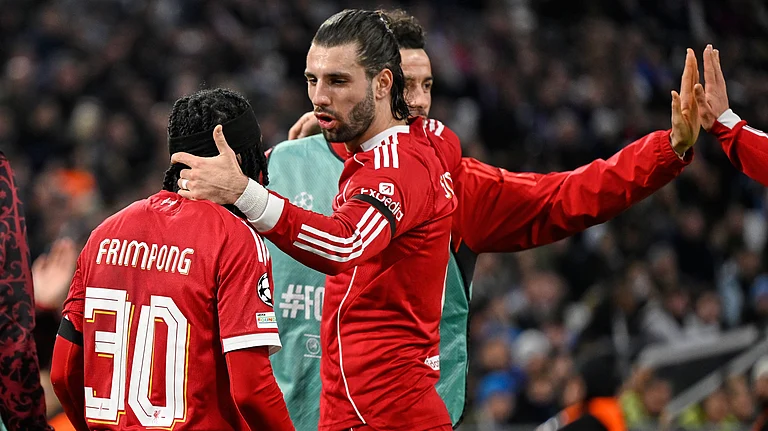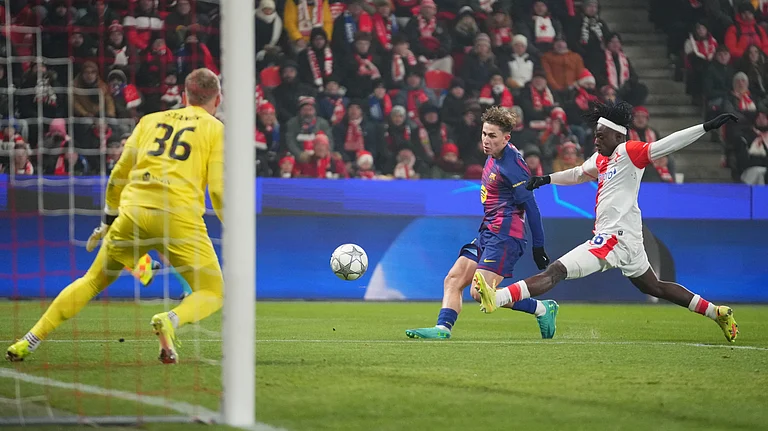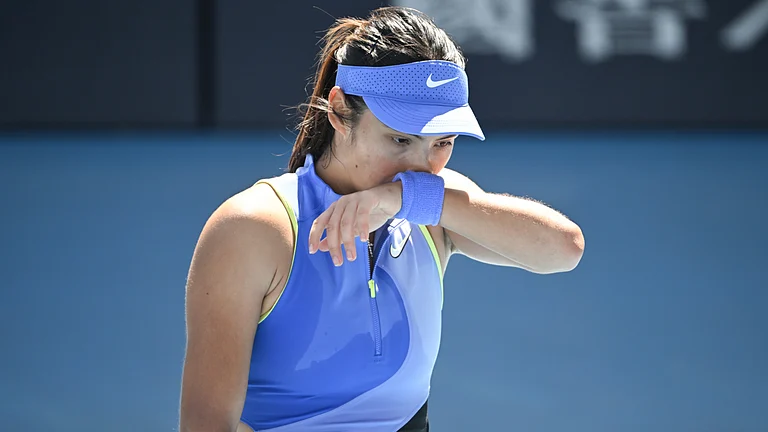Satyajit Ray’s exceptional and visionary filmmaking has drawn sustained intelligent attention from scholars and cinephiles over the past several decades. As we look back to his prolific body of work over four decades, one aspect we often attribute implicitly to his creative genius or simply happenstance is his unerring eye for casting actors to parts they appeared to have been born to play. Today casting directors conduct auditions on an industrial scale to match the actor (or actor aspirant) to the part, while several parts are written with stars in mind and the role tweaked to accommodate their quirks and cloak their limitations. Given the shoestring budgets Ray worked with, it would not have been feasible to rely on someone else to match actors to the parts he had meticulously written himself and he preferred to retain creative control over as many departments of the filmmaking process as he possibly could to retain his own authorial signature in the final impression. His keen literary sensibility was matched by a remarkable clarity in visualising the scenography, actor and their complete character arcs in his head before filming would formally commence.
Ray worked with all kinds of actors—children and adults with no previous acting experience, professional theatre actors and superstars from Bengal, Bombay and Britain (as evinced by Richard Attenborough playing General James Outram, the Bayard of India, in The Chess Players; Shatranj ke Khiladi, 1977). The casting masterstroke most revelatory of his genius was Uttam Kumar in Nayak, one of only two times he collaborated with the celebrated matinee idol. Nayak is unmatched as a film even today in an industry given to frequent, tiresome and vacuous navel gazing in the film within the film format or beyond, one that unravels the psychology and misgivings of a superstar and it is difficult to think of anybody other than Uttam Kumar as Arindam Mukherjee in the eponymous role.
ALSO READ: The ‘Normal’ Lens
Ray’s contemporary Mrinal Sen once observed that he had been puzzled by Ray’s decision not to cast his own discovery Soumitra Chatterjee in Nayak. He seemed to have missed the rationale behind Ray’s casting entirely, which contained many clues that played a delicate dance with the audience’s imagination. When was Arindam Mukherjee speaking and when was it Uttam Kumar instead ventriloquising via Arindam? Ray’s second original screenplay after Kanchenjungha four years earlier finds Arindam travelling from Calcutta to Delhi to receive a national award, where he is approached by Aditi Sengupta (Sharmila Tagore in a remarkably intelligent and unaffected performance) for an interview for her magazine. Through their exchange, Ray masterfully delves into the fears, anxieties, determination and inherent loneliness of a superstar who has risen to the top, but not without considerable compromise and some patently questionable moral choices. His conviction has given way to arrogance, not untempered by insecurity, but he also desperately wants to be understood and commiserated with. Sharmila Tagore in a role reminiscent of her collaboration with Ray five years later in Seemabaddha is the conscience figure here, without resorting to proselytising, pontificating or the trappings of cliché.

It would be remiss not to mention Ray’s other casting masterstroke in being able to visualise Amjad Khan as Wajid Ali Shah in Shatranj ke Khiladi, which was the former’s next major film role after playing the enfant terrible Gabbar Singh in Sholay, which released a couple of years before Shatranj. How Ray was able to locate the portly, mild mannered, poetry-loving, sensitive, almost effeminate Nawab amidst that machismo and swagger will always remain a thing of wonder to me. It is symptomatic of his ability to discern which actor would best embody the character he had delineated and his penchant for casting against type, which was his wont. He had initially thought of Asrani for the part but repurposed it for Amjad Khan. He had also toyed with other names for Mirza’s wife Khurshid like Madhur Jaffrey (who had once been married to Saeed) and Hema Malini but he eventually decided against casting them. He also made rich and suggestive acoustic use of Amitabh Bachchan’s sonorous baritone in the same film after Mrinal Sen recommended him to Ray, having worked with him in Bhuvan Shome. Barring Naseeruddin Shah, Ray worked with virtually all the finest actors working in the left of mainstream in Bombay. It is testament to Ray’s outstanding capabilities and craftsmanship that hardly any actor was unwilling to accommodate their dates for him despite being cognizant that they would not yield immediate commercial dividends.
ALSO READ: Ray Of Hope
Santosh Dutta was not known widely as a comic actor before Sonar Kella, and Ray was able to envision the serious Anil Chatterjee as both the postmaster of Tagore’s story and his own flippant philanderer namesake Anil in Kanchenjungha just the year after. No other director before or since has remoulded actors so consistently to suit the demands of the character, though he could occasionally fall prey to decisions that were a tad predictable like casting Dhritiman Chaterji as the mealy mouthed rabble rouser in Ganashatru, his adaptation of Ibsen, and the brazen purveyor of uncomfortable missives in Agantuk. Over 14, he gave Soumitra Chatterjee what were indubitably his best roles in a chequered 340 film career that ended abruptly last year in mid-November.

Ray designed the three parts of the Apu trilogy without any specific actors in mind. In Pather Panchali (1955), his much feted directorial debut, only Chunibala Debi, Tulsi Chakraborty and Kanu Banerjee had previous professional acting experience. Much of the film’s charm and originality resonant more than six decades later stems from the fact that the unit predominantly, if not exclusively, comprised rank newcomers whose passion was matched by their fierce conviction that they were on to something of immense and far-reaching consequence—a fact that the film’s subsequent enthusiastic critical reception has only confirmed. Ray introduced Soumitra Chatterjee and Sharmila Tagore as the newly married couple in the third part of the trilogy and their storied filmographies are further proof to the astuteness of his decision, though they unfortunately did very few films opposite each other with Ray and three other directors.
ALSO READ: Message In The Medium
Ray wrote Parash Pathar with Tulsi Chakraborty in mind and Jalsaghar, Devi and Kanchenjungha with Chhabi Biswas in mind. He abandoned several projects he had visualised with the two of them after their untimely deaths. Ray has written how a tone deaf Chhabi Biswas played the aesthete and musical connoisseur Biswambhar Roy to perfection. He has also delineated with characteristic eloquence his initial misgivings with Biswas, who insisted on doing his makeup himself. This, Ray felt, made the initial portions come across as overly theatrical, which the characteristic perfectionist regarded as an untoward blemish. Actors like Karuna Banerjee (as Sarbajaya), Madhabi Mukherjee (as Charulata) and Utpal Dutt (as Hirak Raja and Ray’s thinly veiled alter ego Manomohan Mitra in his last film Agantuk) are virtually synonymous with their roles, though they portrayed a diverse range of characters within and beyond Ray’s oeuvre.
Ray first noted the effective use of child actors as a keen student of European arthouse cinema, particularly the Italian neorealist classic Bicycle Thief (1948) by Vittorio de Sica, which, among 98 other films on an early trip to London coupled with his stint as an observer on Jean Renoir’s The River, cemented his decision to turn from advertising to full-time feature filmmaking in a cinematic ecosystem that was still incipient and disorganised.
ALSO READ: Most Wanted

The Game—Shatranj ke Khiladi, 1977
Ray’s exceptional facility with child actors requires a separate longer piece and remains unmatched by any contemporary director within the country and beyond. Most of his child actors revealed that he took them into confidence, whispered instructions to them privately and never talked down to them, treating them like intelligent adults, and they felt secure and trusted enough to be able to deliver. Some of them turned to acting as adults, but barring Sharmila Tagore, Aparna Sen nee Dasgupta (as the adorable tomboy Mrinmoyee in the Samapti portion of his first anthology film Teen Kanya, arguably still her most celebrated film role after six decades in front of and behind the camera) and Jaya Bhaduri (Mahanagar), no one else was able to distinguish themselves in a manner that these three have, consolidating their careers and by marriage becoming part of the Mumbai industry’s two most influential film families. Alokananda Roy (Kanchenjungha), Kushal Chakrabarty (Sonar Kella) and Shoham (Shakha Proshakha) did pursue acting subsequently, but were largely restricted to the Tollygunge film industry and did not emerge as major players.
Ray continued to introduce a number of new, intelligent and thoughtful faces in his City trilogy—Dhritiman Chaterji in Pratidwandi, Barun Chanda in Seemabaddha and Pradip Mukherjee in Jana Aranya. Occasionally he cast actors after noticing them in the work of his contemporaries and proteges—Madhabi Mukherjee was cast as Arati in Mahanagar in her first of three back-to-back collaborations after Ray noticed her in Mrinal Sen’s Baishey Srabon. Similarly, Mamata Shankar was introduced by Mrinal Sen in his Mrigaya before Ray cast her in his last three feature films. Ray noticed Shabana Azmi in Shyam Benegal’s first film Ankur and cast her as Sanjeev Kumar’s unhappy, disgruntled wife in Shatranj—a role for which she may have been a tad too young, but was a quietly effective presence nonetheless. Ray approached Waheeda Rehman to play Gulaabi after noticing her in Guru Dutt’s Kaagaz ke Phool (1959). He cast Jennifer Kendal as Miss Gilby in Ghare Baire (1984) after her powerful portrayal as the protagonist Violet Stoneham in Aparna Sen’s directorial debut 36 Chowringhee Lane, for which he had read the screenplay and recommended Shashi Kapoor (Jennifer’s husband) as the producer because he was collaborating with Shyam Benegal on Junoon and Kalyug.
ALSO READ: Uncle Auteur
I will close with four of my favourite casting choices in Ray’s cinematic oeuvre. The first of these is twinned—Tapen Chattopadhyay as Goopy and Robi Ghosh as Bagha. The former was a role Ray’s favourite, the late Soumitra Chatterjee, keenly wanted to play, but Ray rejected his plea because he could not envision Sisirkumar Bhaduri’s protégé with immaculate Bengali diction playing a naïve country bumpkin. It is difficult today for anyone who has watched the film to imagine anyone else in that role. Ray also made remarkable use of Santosh Dutta as Lalmohan Ganguly, whose gratifying presence in Sonar Kella was so euphorically received that Ray’s book illustrations in subsequent Feluda adventures started uncannily resembling Dutta—a classic instance of film reanimating its putative literary source. Dutta also played the twin brother kings of Shundi and Halla in Goopy Gyne Bagha Byne. The poet, dramatist, musician and polymath Harindranath Chattopadhyay played the whimsical and slightly senile Barfi, the magician, in Goopy Gyne, with rich support from the brilliant comic actor Jahor Ray as the Prime Minister of Halla. Ray cast Harindranath a few more times and most memorably as the avuncular bibliophile Sidhu Jyatha in his Feluda films.
ALSO READ: The Household On Bishop Lefroy Road
In his two Hindi movies, both adaptations of Premchand short stories, Ray worked with some of the most celebrated arthouse actors from Mumbai, including Saeed Jaffrey, Sanjeev Kumar and Amjad Khan to Om Puri, Smita Patil and Shabana Azmi.
Not all his casting decisions were met with unequivocal enthusiasm, however. Simi Garewal’s redolently darkened complexion in his Aranyer Dinratri drew some flak, but none more than his decision to cast Swatilekha Sengupta as Bimala in Ghare Baire, a role Aparna Sen, Sharmila Tagore and many others had been considered for (and expressed sustained interest and enthusiasm in), but were eventually and quite inexplicably jettisoned.
In a recent interview, Madhabi Mukherjee revealed that Ray had offered her the lead in Nayak, Ashani Sanket and Ghare Baire, after what eventually became the last of their three collaborations in Kapurush (1965). Sharmila Tagore was also sent the script of Ashani Sanket and was also briefly considered for Charulata. He appeared to have toyed between Madhabi Mukherjee and Sharmila Tagore for most of his complex female protagonists. He usually demonstrated remarkable clarity about who he wanted in mind. Tagore was very keen to play Jhuria in Sadgati, but Ray insisted that only an actor of the late Smita Patil’s calibre could do justice to her. Madhabi Mukherjee was his first choice for many roles in his post-1965 cinematic outings, but an alleged relationship between them, probably Tollygunge’s worst kept secret, and the subject of Rituparno Ghosh’s thinly fictionalised Abohoman, put paid to the possibility of further collaboration between them. Madhabi Mukherjee has recently gone on record to describe herself as unyielding in not accepting the three offers Ray approached her with after Kapurush. In fact, much of the furore over the (mis)casting of Swatilekha as Bimala drew from unfavourable comparisons with the film Charulata and the widely held belief that Madhabi would have been perfect in the central role.
Ray also wanted to work with Suchitra Sen in a planned adaptation of Debi Choudhurani, and had planned a film with Columbia Pictures that would have Marlon Brando and James Coburn. He had also expressed interest in an adaptation of the dicing sequence of the Mahabharata with an international, multi-ethnic and multilingual cast, including Nikolay Cherkasov and Akira Kurosawa’s frequent collaborator Toshiro Mifune.
Many of his more ambitious casting gambles may not have fructified, but the ones that did are symptomatic of his brilliant ability to locate, sift, hone and match the right actor for the right part without falling prey to unnecessary and extraneous commercial considerations. I say this advisedly for a contemporary shtick (or gimmick, if you will) in Tollygunge seems to be sourcing actors from Mumbai, where local talent could have ably stepped in and done the same role as well, if not better. The late Rituparno Ghosh, a self-styled Ray protégé, was the apogee of this trend and he took pride in matching Bollywood stars whose fortunes were often at a low ebb with local actors who dubbed for them to produce the illusion of verisimilitude. Often these actors could have done greater justice to the characters they were dubbing for. Ghosh who took pride in his ability to command actors from Mumbai at his beck and call with severely slashed rates made films with a keen eye on the market. Ray, an infinitely more capable and visionary director who puts his self-consecrated acolytes to shame with his clarity and depth, never stooped to these gratuitous commercial lows. This ability to cast his actors in a manner that brought out best the character they were essaying without obsessing over footfalls is an aspect of his filmography that has not elicited the critical attention it richly deserves.
(Views are personal.)
Subhankar Bhattacharya is a scholar starting on an MPhil in Renaissance Literature from Cambridge. He loves to work on old books and is an incorrigible cinephile.





















